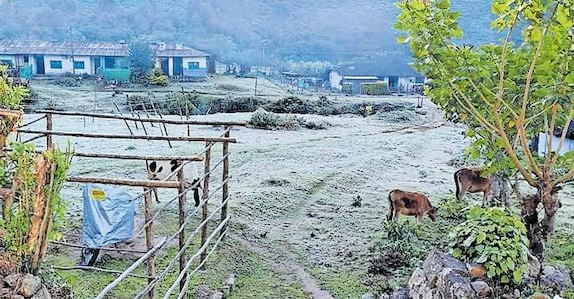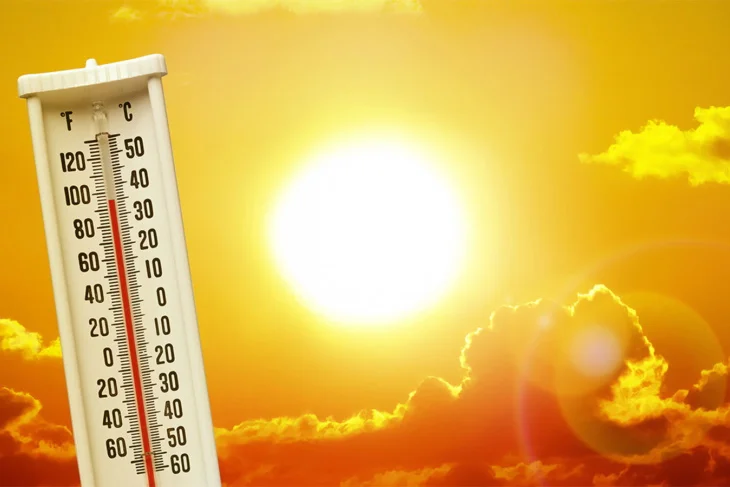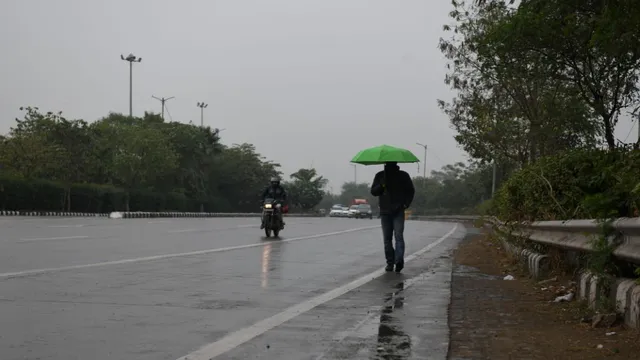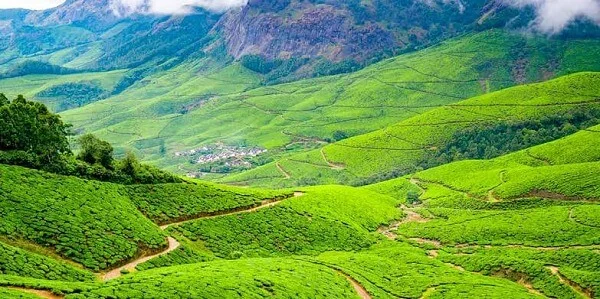Seasons in Kerala: A Climate Overview
Kerala is one of the popular places known as “God’s Own Country”, being a strikingly beautiful state lying on the southern west-coast of India. Kerala flaunts serene backwaters, hot beaches, lush greenery, exotic wildlife, and picturesque hill stations. Due to its geographical positioning, with the Arabian Sea to the west and the Western Ghats to the east, the state experiences a tropical monsoon climate with relatively stable temperatures throughout the year. The climatic patterns in Kerala are largely influenced by seasonal monsoons, high humidity levels, and moderate temperature fluctuations.

Unlike most Indian regions that endures the fiercest heat waves or shivering winters, Kerala is pleasantly warm, with differences in precipitation and humidity through various seasons. The rich biodiversity vibrant landscapes, and consistently green cover are mostly attributed to its tropical rainforest climate. The state maintains high humidity levels, often ranging from 60% to 80%, contributing to a persistently warm and moist environment. Kerala’s annual temperature typically fluctuates between 20°C (68°F) and 36°C (96.8°F), with coastal areas experiencing higher temperatures due to maritime influence, while inland and high-altitude regions maintain relatively cooler conditions.
We can broadly classify the overall climate of Kerala as having three seasons
Winter, Summer, and Monsoon. Each season has different meteorological characteristics, which affect agricultural activities, water availability, and overall climatic stability in the region. Tourists can visit the place at any of the seasons, as each season holds its own unique beauty and charm. Apparently, the climatic conditions in Kerala make it an ideal destination. for tourism throughout the year.

Humidity and Temperature Trends
Kerala’s climate is predominantly humid due to its proximity to the Arabian Sea and dense vegetation cover.
The humidity usually ranges between 60% and 80% seasonally and at different distances from water bodies. The annual temperature fluctuation ranges generally from 20°C (68°F) to 36°C (96.8°F), resulting in a warmly appealing climate most of the time. The seashore part of the state is generally very humid and hot, whereas its hill stations are cooler and more refreshing in comparison.
- Coastal Regions: High humidity and temperatures ranging from 24°C (75.2°F) to 35°C (95°F).
- Inland Plains: Slightly lower humidity with temperatures between 22°C (71.6°F) and 34°C (93.2°F).
- Hill Stations: Considerably cooler temperatures, often dropping to 15°C (59°F) in winter, with reduced humidity levels.
The annual temperature profile remains relatively stable, with minor variations depending on elevation and monsoonal effects.

Climate and Weather Patterns by Season We can broadly differentiate prominent seasons in Kerala. into three categories:
Winter (December to February): Pleasant and cool, making it the best time for sightseeing and cultural experiences.
Summer (March to May): Warm and humid, with fewer crowds and budget-friendly travel opportunities.
Monsoon (June to November): Heavy rainfall transforms Kerala into a lush paradise, perfect for monsoon tourism and Ayurvedic wellness retreats.
The weather of Kerala is actually an attraction, making it a place to visit throughout the year. The tropical monsoon climate offers a wide range of experiences, from the misty hills of Wayanad to the sun-kissed beaches of Varkala. Winter is the time when Kerala has a cool, comfortable breeze, making it the best time to explore its cultural treasures and natural beauty. The summer heat is balanced by refreshing coastal winds, and this season provides a more secluded and quiet experience for tourists. The state’s rich landscape comes alive again in the monsoon rains, turning Kerala into a lush green heaven for all who wish to witness the special magic of the monsoon. Each season of Kerala reveals another aspect of this wonderful destination, and therefore it remains a place to explore all through the year.
Different Seasons in Kerala
Winter Season (December – February)
The winter season in Kerala often begins by the end of November. and extends up to mid-February. This season is characterized by cool breezes, soothing temperatures, and relatively dry weather. Usually, in winter the temperature falls between 23°C (73.4°F) and 30°C (86°F). Nights can be a little cooler, especially in the hill stations like Munnar and Wayanad, where the temperature may drop to around 15°C (59°F).
This season is marked by clear skies and stable atmospheric pressure, making it an ideal period for agricultural activities and water conservation efforts. The reduction in precipitation leads to moderate soil moisture levels, benefiting crops like rice, tea, and spices.
Winter can be considered to be the best season to visit Kerala. Some of the popular destinations during this season are Munnar, Wayanad, Kochi, Alappuzha, Thekkady, and Kozhikode. Many of the festivals that hold rich heritage of Kerala, like the Kochi-Muziris Biennale, Thrissur Pooram and temple festivals showcasing artistic traditions such as Kathakali and Theyyam, also fall upon winter seasons.
Though slightly cool breezes are flowing during this period, one can still beat the mild chill with warm clothes like sweaters or mufflers.

Summer Season (March–May)
By the close of February, as winter starts slowly disappearing, the influence of summer becomes clearly apparent in Kerala. AsMarch is considered to mark the commencement of the summer season in the region and its culmination until the final week of May, this phase, the temperatures progressively warm up, becoming dry at least to some extent. Day temperatures might reach 35°C (95°F) in the afternoon but can dip down to about 24°C (75.2°F) in the nighttime.
The large evaporation rates and the long exposure to sunlight result in water surface considerably going down; this affects reservoirs, and river flows also. The season is also referred to for the pre-monsoon showers popularly known as ‘Mango Showers’ that are momentary relief from heat and also aid in agriculture for the approaching monsoon.
Mostly, the coastal regions are hotter with humid conditions. During the summer months, light and loose fabrics such as cotton are advised for comfort. Coastal districts, especially Kochi, Kozhikode and Thiruvananthapuram, tend to be hot during the day due to high humidity and are much colder at night in hill stations, such as Ponmudi, Munnar and Wayanad. Summer is also the season of Vishu (Malayalam New Year), celebrated with fireworks, traditional feasts, and cultural performances.

Monsoon Season (June – August, October – November) Kerala experiences two distinct monsoon phases:
Southwest Monsoon (June – August)
The onset of the Southwest Monsoon, or ‘Edavappaathi,’ typically occurs in late May or early June, marking the heaviest rainfall period. The season is characterized by continuous and intense rainfall, with daily precipitation often exceeding 300mm in certain regions. The temperature remains between 24°C (75.2°F) and 31°C (87.8°F), with high humidity levels persisting.
This phase plays a crucial role in replenishing water sources, sustaining biodiversity, and supporting agriculture. However, excessive rainfall also leads to challenges such as waterlogging, soil erosion, and occasional flooding, particularly in low-lying areas.
Northeast Monsoon (October – November)
Also known as ‘Thulavarsham,’ the Northeast Monsoon arrives in late September and continues until November. While the rainfall is comparatively lower than the Southwest Monsoon, it still contributes significantly to Kerala’s annual precipitation levels. The temperature ranges from 23°C (73.4°F) to 31°C (87.8°F), and humidity levels remain high.
This period witness intermittent heavy rains, cloud cover, and occasional cyclonic activity in the Arabian Sea, affecting wind patterns and coastal weather dynamics.
With rejuvenated waterfalls, misty hilltops, and overflowing rivers, monsoons rejuvenate Kerala’s landscapes, making it a paradise for nature lovers and wellness travelers. This is the best time to experience Ayurvedic rejuvenation therapy, as the cool, moist climate enhances the effectiveness of traditional treatments.
Transitional Month (September)
September serves as a transition phase between the two monsoon seasons, marked by fluctuating weather conditions. The month experiences intermittent showers, occasional dry spells, and variations in cloud cover. Temperature averages around 27°C (80.6°F), and humidity remains high. This period is significant for hydrological balance, as it allows for gradual water absorption and distribution across Kerala’s River basins and wetlands.

Climatic Impact on Kerala’s Environment
Water Resources: The monsoon seasons significantly contribute to Kerala’s extensive river systems, lakes, and reservoirs. However, excessive rainfall sometimes leads to flooding, requiring efficient water management strategies.
Agriculture: The marked seasons enable many cropping cycles and, among major produces, include rice, coconut, rubber, and spices. The monsoons are the most beneficial seasons for retaining moisture in the soil but also involve some risks with infestations by pests and crop damage.
Coastal Climate Variability: Being a coastal state, Kerala experiences the direct impact of changing sea temperatures and seasonal tidal variations. The interaction between land and sea breezes influences daily temperature and humidity fluctuations.
Natural Disasters: Although Kerala essentially experiences a moist climate, at times, cyclonic disturbances and heavy monsoons result in landslides, flash floods, or other so-called localized weather anomalies.
The climate of Kerala is unique because it represents the perfect blend of tropical stability and seasonal dynamism within the Indian subcontinent. The weather of the state largely depends on the monsoon influence, and therefore, has its wet and dry periods which, in turn, shape its ecological and agricultural landscape. The comprehension of seasonal variability is vital to disaster preparedness, water resource management, and sustainable development. Kerala is therefore an ecological hotspot that thrives on climatic diversity with rainfall, moderate temperature, and high humidity in equal balance.
